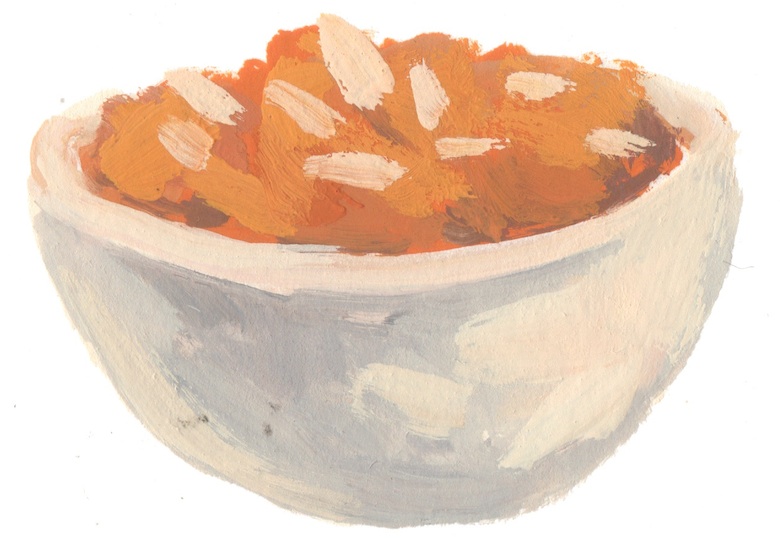
Editor’s note: For our annual holiday issue, we asked an international cohort of New Yorkers to share a memory of a seasonal dish from their childhood. Read more from Amrita Gupta below and, according to her, find a comparable version of this gajar ka halwa at Samudra in Jackson Heights, Queens.
Diwali, the Hindu festival of lights, marks the start of the holiday season in India. In a country that finds reason to celebrate all year round, Diwali holds a special significance in most homes. It marks the start of a new year, good over evil and triumph over darkness, if you’re into that sort of thing. To me, growing up in Bangalore, it meant diyas (oil lamps) and fireworks, and for as long as I can remember, gajar ka halwa: a pudding made from grated carrots, milk and sugar.
The gajar ka halwa at home is made by slow-cooking the carrots in whole milk and generous servings of ghee (clarified butter). My mother likes to add raisins, almond slivers and a smattering of cardamom powder, which is still the standard I judge all other good gajar ka halwa against.
An efficient if reluctant cook, Ma rarely makes time for fanciful desserts. But on Diwali, she spends the better part of her day at the stove top while letting the milk soften pounds and pounds of shredded carrot, stirring for hours until it thickens to a fudgy consistency. She’s still in the kitchen when we’re done laying out the diyas, decorating the home with flowers and are dressed for the puja (prayers). I think this ritual is why her gajar ka halwa holds such a special place in the family.
By the time she’s done, and the glistening halwa is scooped from the kadhai into glass dishes, the rich aroma of long-simmered milk and butterfat wafts through the entire house. We usually aren’t allowed a single bite until the prayers are complete. The gajar ka halwa is placed before the gods as an offering of sorts, along with other sweets, fruits, nuts and flowers. I’ve spent many a puja eyeing it hungrily, counting down to the moment we’d be allowed to serve ourselves (Come to think of it, it probably tastes better for the wait).
We celebrate Diwali during the new moon between October and November. This year, it was on November 11, and I was in New York. On one of our long chats on the phone, I asked my mother when she first learned to make gajar ka halwa and how it came to be a Diwali tradition in our home. It’s a winter favorite, especially in north India, but it’s not exclusively associated with Diwali. It turns out there’s no particular romance to the backstory: She can’t remember how she picked it up along the way, and she only makes it every year because she knows it’ll turn out wonderfully each time.
Once I left home, I realized it’s not all that easy to get it right. Most restaurants tend to offer a poor approximation of the slow-cooked, homemade version. Too often, gajar ka halwa is dry when it should be moist, or it’s overly spiced and too sweet. The flavor of the carrots should shine, but if khoa or milk fat is used to cut cooking time, it just tastes cloyingly of dairy.
That’s why I’m always surprised when I find a version that reminds me of home. Like in January this year, when I was in San Cristóbal de las Casas. One of the backpackers in the hostel I was staying at told me he’d made some Indian pudding earlier that week that he wanted me to try. It was just a little thing he liked to do with carrots sometimes, he said. And so, after a long night out dancing bachata, in a rundown hostel in Mexico, of all places, I was offered a tiny potful of gajar ka halwa and transported to my mother’s kitchen in a single bite.



